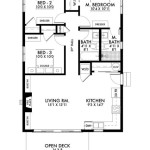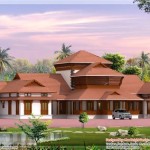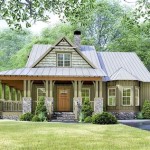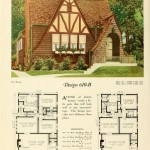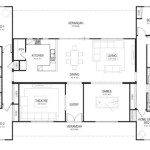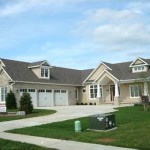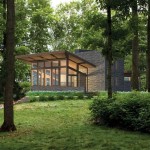Design Your Dream Home House Plan With Mother-In-Law Suites
Designing a home to meet the evolving needs of a multi-generational family presents a unique set of considerations. The inclusion of a mother-in-law suite, also known as an accessory dwelling unit (ADU) or secondary suite, is becoming increasingly popular. This feature provides independent living space for aging parents, adult children, or other family members while maintaining a sense of connection and shared resources within a single property. A thoughtfully designed house plan incorporating a mother-in-law suite adds significant value to both the property and the quality of life for the occupants.
This article explores the key factors involved in designing a dream home house plan with a mother-in-law suite. Considerations range from zoning regulations and space allocation to privacy concerns and accessibility features. By carefully addressing these elements, homeowners can create a comfortable and functional living environment that meets the diverse needs of all family members.
Understanding the Benefits of a Mother-In-Law Suite
Integrating a mother-in-law suite into a home design offers numerous advantages beyond simply providing additional living space. These benefits extend to both the immediate family and the overall value of the property.
One of the primary benefits is the enhanced family support system. Having an aging parent or adult child living within the same property allows for easier caregiving and assistance. This can be particularly valuable when dealing with medical needs, childcare responsibilities, or simply providing companionship. Regular interaction can reduce feelings of isolation and loneliness, fostering a stronger sense of family unity.
Financially, a mother-in-law suite can offer significant benefits. For families caring for aging parents, it eliminates or reduces the cost of assisted living or nursing home care. Alternatively, the suite can be rented out to generate income, helping to offset mortgage payments or other household expenses. This income-generating potential can be particularly attractive in areas with high rental demand.
From a property value perspective, incorporating a mother-in-law suite generally increases the marketability and resale value of the home. Many potential buyers are attracted to the flexibility and potential income opportunities that such a feature provides. Even if the immediate need for an ADU isn't apparent, the option for future use or rental income can be a significant selling point.
Finally, the design of a mother-in-law suite promotes privacy and independence for all residents. While sharing a property, each individual or family unit maintains their own separate living space, minimizing potential conflicts and fostering a more harmonious living environment.
Key Considerations for the Design Process
Designing a house plan with a mother-in-law suite involves careful planning and attention to detail. Several key considerations must be addressed to ensure the suite meets the needs of its occupants and integrates seamlessly with the overall home design.
Local Zoning Regulations: Before embarking on the design process, it's essential to research and understand local zoning regulations regarding accessory dwelling units (ADUs). These regulations can vary significantly from one municipality to another and may dictate the size, placement, and permitted uses of the suite. Some areas may have restrictions on renting out ADUs, while others may require separate utility meters or specific parking provisions. Compliance with these regulations is crucial to avoid potential legal issues and ensure the long-term viability of the suite.
Accessibility: Accessibility is paramount, particularly if the suite is intended for an aging parent or individuals with mobility limitations. This involves designing the space with features such as wider doorways, grab bars in bathrooms, roll-in showers, and ramps or elevators to eliminate stairs. Consider the placement of light switches and outlets, ensuring they are easily accessible. Universal design principles should be incorporated throughout the suite to create a comfortable and safe living environment for people of all abilities.
Privacy and Soundproofing: Creating a sense of privacy is essential for both the main house and the mother-in-law suite. This can be achieved through careful placement of the suite within the overall floor plan. Consider locating the suite on a separate wing of the house or over a garage to minimize noise transmission. Soundproofing measures, such as insulated walls and floors, can further enhance privacy. Separate entrances and outdoor spaces are also crucial for maintaining a sense of independence.
Functionality and Layout: The layout of the mother-in-law suite should be functional and efficient, maximizing the available space. A well-designed suite typically includes a bedroom, bathroom, living area, and kitchenette. The kitchenette should be equipped with essential appliances such as a refrigerator, microwave, and cooktop. Ample storage space is also important for minimizing clutter. The overall design should prioritize comfort and convenience, allowing the occupant to live independently and comfortably.
Separate Utilities: The decision to have separate utilities for the mother-in-law suite is a crucial one that impacts both cost and independence. While combining utilities can be more economical in the short term, it can also lead to disputes over usage and billing. Installing separate meters for electricity, gas, and water allows for accurate tracking of consumption and simplifies the process of splitting costs. This can be particularly important if the suite is being rented out.
Entrance and Egress: Ensuring a safe and accessible entrance and egress is essential for the safety and well-being of the occupants. This involves providing a clear and well-lit pathway to the suite's entrance, free from obstacles. If the suite is located on an upper floor, a dedicated staircase with handrails or an elevator should be provided. In the event of a fire or other emergency, it's crucial that occupants have a clear and unobstructed escape route. Consider installing smoke detectors and carbon monoxide detectors throughout the suite.
Designing for Specific Needs and Preferences
Beyond the fundamental considerations, tailoring the mother-in-law suite to meet the specific needs and preferences of its intended occupants is essential for creating a truly comfortable and functional living space. This involves considering factors such as lifestyle, hobbies, and medical requirements.
For aging parents with mobility limitations, incorporating age-in-place design principles is crucial. This includes features such as walk-in bathtubs or roll-in showers, grab bars in bathrooms, and wider doorways for wheelchair accessibility. Consider installing lever-style door handles and rocker-style light switches, which are easier to operate for individuals with arthritis or limited hand strength. Non-slip flooring can also help prevent falls.
If the suite is intended for a family member with specific medical needs, the design should accommodate those requirements. This may involve installing specialized equipment, such as a hospital bed or oxygen concentrator. Adequate space should be allocated for storing medical supplies and equipment. Proximity to medical facilities and emergency services should also be considered.
The design should also reflect the occupant's personal preferences and lifestyle. If they enjoy cooking, a well-equipped kitchenette with ample counter space and storage is essential. If they enjoy reading, a comfortable reading nook with good lighting should be incorporated. Personalizing the space with their favorite colors, artwork, and furniture can help them feel more at home.
Flexibility is also an important consideration. The design should be adaptable to accommodate changing needs over time. For example, a room that is initially used as a bedroom could be converted into a home office or hobby room if the occupant's needs change. By designing with flexibility in mind, the mother-in-law suite can remain a valuable asset for years to come.
Incorporating natural light and ventilation is also crucial for creating a healthy and comfortable living environment. Large windows and skylights can help to maximize natural light, while operable windows can provide fresh air and ventilation. Natural light and ventilation can improve mood, reduce stress, and promote overall well-being.
Finally, consider the aesthetic appeal of the mother-in-law suite. The design should complement the overall style of the main house and create a cohesive look. Paying attention to details such as lighting, flooring, and paint colors can help to create a welcoming and inviting space.

In Law Suite Plans Give Mom Space And Keep Yours The House Designers

House Plans With A Mother In Law Suite The Designers

Designing And Building New Homes With Mother In Law Suites David Weekley

Barndominium With In Law Suite Plans Blog Eplans Com

Homes With Mother In Law Suites

Designing And Building New Homes With Mother In Law Suites David Weekley

House Plans With A Mother In Law Suite The Designers

Barndominium With In Law Suite Plans Blog Eplans Com

Mother In Law Suite Barndominium Floor Plan With Framing Plans And Elevations Etsy

Homes With Mother In Law Suites
Related Posts

